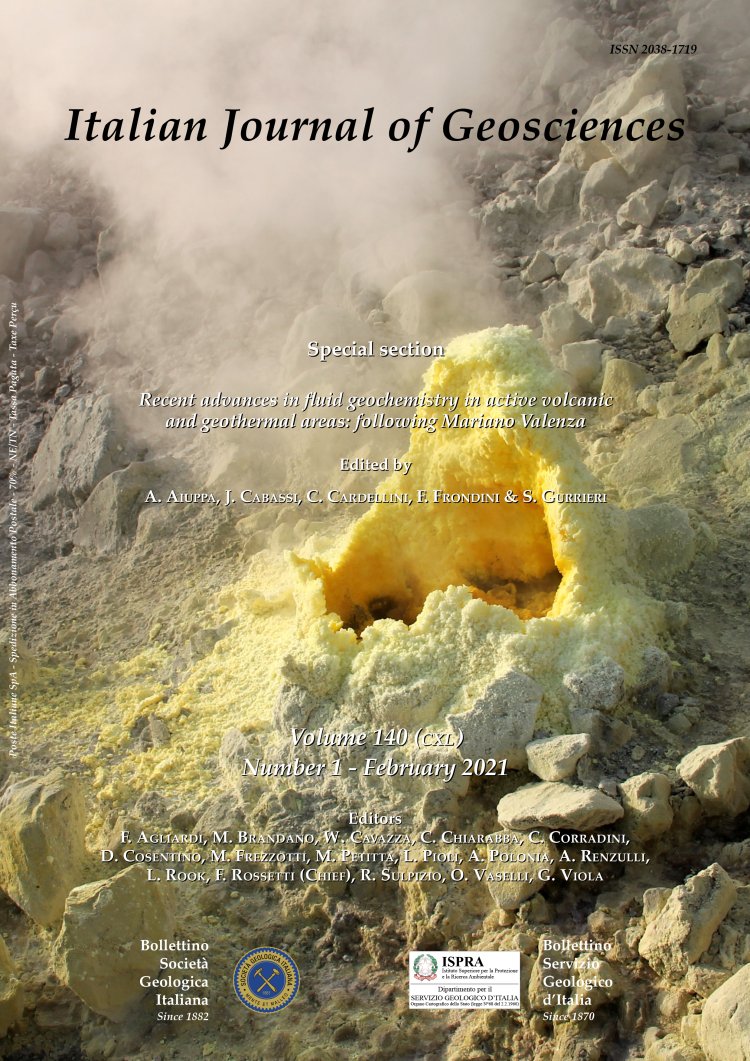

The first observations of CO2 and CO2/SO2 degassing variations recorded at Mt. Etna during the 2018 eruptions followed by three strong earthquakes
Sergio Gurrieri (1), Marco Liuzzo (1), Giovanni Giuffrida (1) & Guillaume Boudoire (2)
(1) Istituto Nazionale di Geofisica e Vulcanologia – Sezione di Palermo – V. Ugo La Malfa 153 – 90146 Palermo Italy.
(2) Université Clermont Auvergne, CNRS, IRD, OPGC, Labora- toire Magmas et Volcans, F-63000 Clermont-Ferrand, France.
Corresponding author e-mail: sergio.gurrieri@ingv.it
Volume: 140 (2021) f.1
Pages: 95-106
Abstract
Mount Etna volcano is well-known for its frequent eruptions and high degassing rates from its summit craters and flanks. The geochemical monitoring network on Mt. Etna that measures soil CO2 flux and in-plume CO2/SO2 ratio recorded very important degassing variations from the flank and the summit craters during the second half of 2018. In this area several significant volcanic events occurred in October and December 2018 and in January 2019. Past observations have distinguished a tendency for wide variations in degassing rates, marked by a sharp increase preceding the onset of volcanic activity. However, this is the first time that three earthquakes of magnitude M>4 have been registered since the inception of the geochemical network in January 2001. Of particular interest is the CO2/SO2 ratio in plumes recorded by the monitoring station sited at the summit crater of Voragine showed very significant degassing variations, which were comparable with those recorded for the soil CO2 flux.
This paper focuses on the combination of events occurring on Mt. Etna and their relationship with degassing rates. The most remarkable results can be summarized as follow: i) the networks recorded high variations of soil CO2 flux and CO2/SO2 ratio, which assisted in identifying distinctive phases of pressurization of Mt. Etna plumbing system and ii) all earthquakes occurred during phases of minimum gas rate, which in turn followed stages of pressurization involving different portions of the plumbing system. The 2018 period of high volcanic activity and the corresponding seismic episodes provided an invaluable case study for Mt. Etna, which allowed to combine seismic events and geochemical signal variations.
Keywords
Get Full Text